
SHUFFLEDINK Guests on THIS DREAM HOUSE Ohio Radio Show
We do everything to help (our clients) create what they see in their minds. Charles Levin, Shuffled Ink Founder & President

We do everything to help (our clients) create what they see in their minds. Charles Levin, Shuffled Ink Founder & President

 (top row, left to right) Charles, Matthew, Jonathan; (bottom row, left to right) Lori, Lisa, Melissa
(top row, left to right) Charles, Matthew, Jonathan; (bottom row, left to right) Lori, Lisa, MelissaThe purpose of Super Deck was to promote and elevate tourist hotspots and establishments in the Orlando area. The original pack consisted of a map and cards with discounts and coupons for local attractions, dinner shows, restaurants, shopping, golf, and recreation. Soon after pitching the concept to prospective vendors, Charles had secured the marketing deck in 90 percent of Orlando hotel rooms.
Throughout the early 2000s, Shuffled Ink’s first employees were his 5 children: Melissa, Lori, Matthew, Lisa and Jonathan. The Levin family would regularly clear off the dining room table and use the space to create playing card prototypes and other related personalized products.
As sales blossomed and new opportunities arose, Charles moved the business into his three-car garage. For several years, this is where all marketing, sales, administration, and shipping took place.
For the past 9 years, Charles and his team of production facilitators, project managers and graphic designers have operated in an 8,000 square-foot office and production facility in Orlando, Florida. By Summer 2022, we are expanding into a 35,800 square-foot manufacturing and office space in Winter Garden, Florida.
Charles’ business model has changed quite a bit since Super Deck. Today, Shuffled Ink specializes in printing custom playing cards, tarot and flash cards, packaging, and more for businesses and individuals worldwide.
Three of Charles’ kids are still involved at Shuffled Ink today.
Matthew, his oldest son, moved back to Orlando from New York City in 2016 to help him run the business as Chief Executive Officer. His daughter Lisa worked at the company part-time for many years but now oversees all customer services as Vice President of Sales. And youngest son, Jonathan, assists behind-the-scenes in the manufacturing facility.
“Throughout the past 22+ years, my kids’ incredible contributions and influence have added to the existence, growth, and success of Shuffled Ink.” –Charles Levin, Shuffled Ink Founder & President
 The Levin Family (left to right): Charles, Lisa, Matthew and Jonathan Levin
The Levin Family (left to right): Charles, Lisa, Matthew and Jonathan LevinShuffled Ink is a multigenerational family business with an unwavering, decades-old mission: to provide an unparalleled experience in customer service and product quality to ensure that all clients’ card visions meet reality.
See what our clients are saying about the services, product quality and pricing we offer: Shuffled Ink Google Reviews.
To receive complimentary samples of our card products, include your delivery address and phone number on your custom quote request form.
If we manufactured your card project and you would like us to share your Card Story on our blog, feel free to connect with our Marketing Team here.
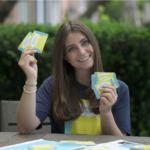
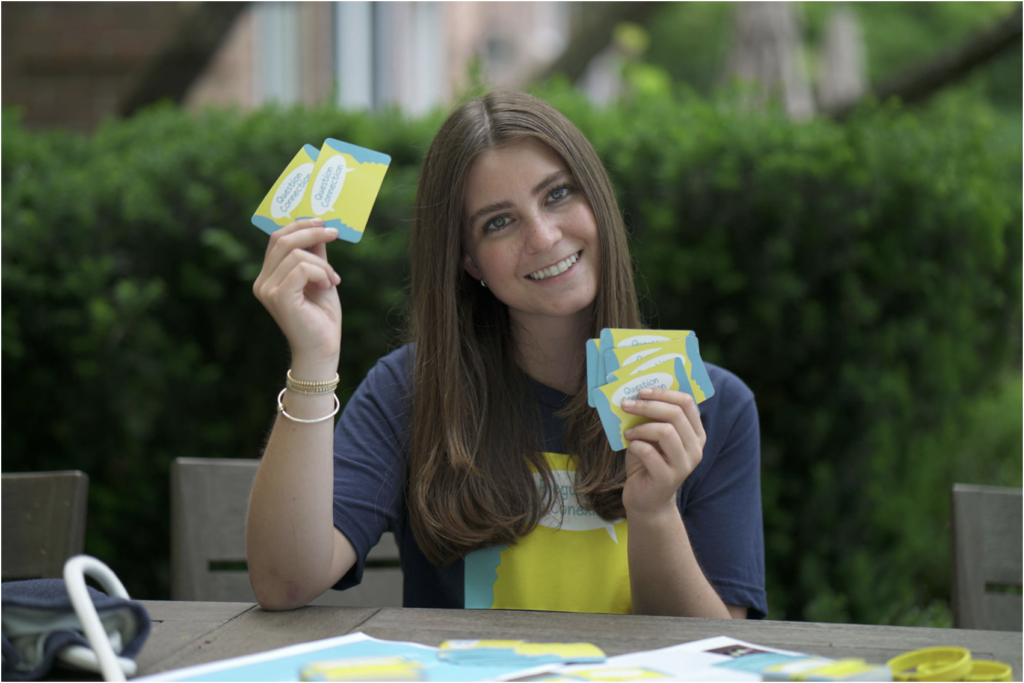
“I was the girl who loved to talk but needed a way to start the conversation.” –Hannah Frazer, founder of Question Connection
This non-invasive, supportive style of facilitating conversation, helps promote inclusion, foster relationships and build genuine connections in the classroom.
Growing up in a diverse, bilingual community, Hannah and so many of her classmates were unsure how to expand beyond their inner circle. Deep-leveled conversations, and even facilitating a surface-based one, felt out of reach. So, Hannah decided to create a practical and fun game that would ultimately redefine the nature of connections.
In this exclusive Shuffled Ink Card Story, game designer Hannah Frazer shares how an independent study transformed into a tangible product that cultivates empathy worldwide.
Young adults like Hannah, who have spent the better half of their lives navigating the world through a digital lens often feel more comfortable communicating via a screen than face-to-face.
Hannah says that the constant presence of technology and social media only complicated her social challenges. This is one of the reasons why she decided to tackle such issues through a year-long independent study project.
Headed by her AP Psychology teacher, Hannah, a junior at the time, worked alongside and learned from other teachers, students, graphic designers and Shuffled Ink manufacturing to bring this idea to fruition. After starting a GoFundMe page for the card game, she covered the cost of production for the first two groups of cards (English and Spanish).
Soon enough, Hannah was actively introducing the conversation-starter game into classrooms, national organizations and other programs.
“I am always incredibly proud to be able to share this game with students and other young people,” Hannah said. “I love seeing the differences in kids’ body language and facial expressions before and after they connect with their peers.”
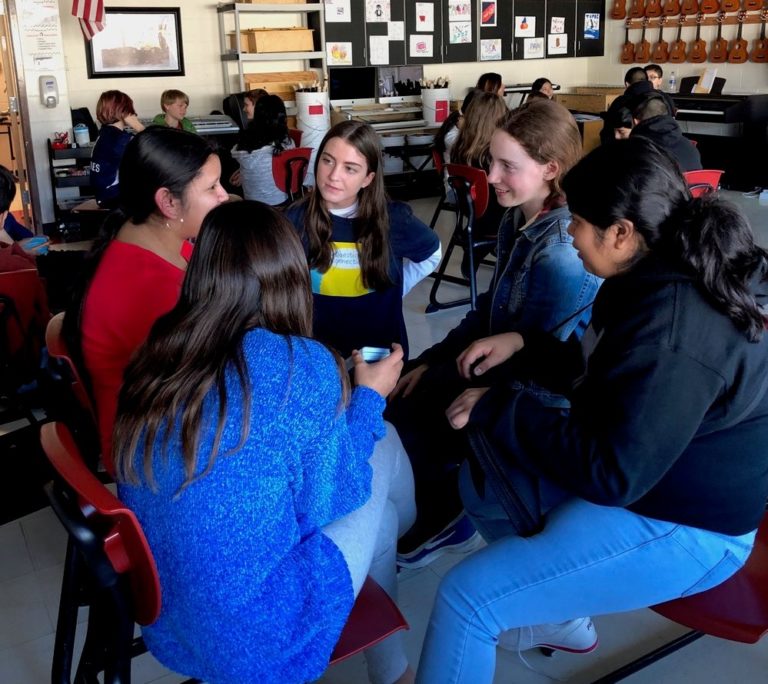 Join a group, grab a deck and start connecting! Info on classroom visits.
Join a group, grab a deck and start connecting! Info on classroom visits.Step 1: Developing a card game that tackles social challenges takes a lot of research, time and effort. So, be patient!
Step 2: Coming up with good ideas and gaining support is not a walk in the park. But that doesn’t mean you should fold and give up. It will all be worth it when you see the positive impact that your card game provides.
Step 3: Play it forward, relax and have fun!
Hannah says that no one should ever be excluded from starting a conversation. This is why all deck proceeds go toward supplying Question Connection to under-resourced communities.
“In today’s world, there has been a huge rise in hate crimes, antisemitism, racism,” she said. “A conversation can make a world of difference when it comes to educating oneself about people from different backgrounds.”
Question Connection strives to put an end to social divisions and you can, too! Send a message to questionconnectiongame.com if you or anyone you know is interested in getting involved!
25 Under 25 Young Entrepreneur’s Magazine (p. 20)
If we manufactured your card project and you would like us to share your Card Story on our blog, feel free to connect with our Marketing Team here.

Ever wonder how your favorite playing card decks are printed? The 20-second video below highlights one of the first steps in Shuffled Ink’s production process: printing the cards.
View this post on Instagram
Pretty cool, right? Well, technology certainly makes the production process appear effortless, and as you’re most likely aware, printing playing cards looked astronomically different back in the day.
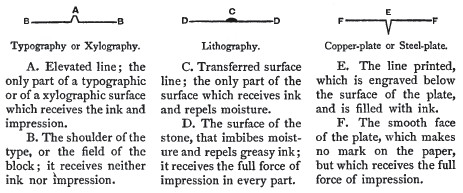
Replace Xerox machines with blocks of wood and you’ll get Woodblock Printing. If it’s difficult to imagine creating playing cards with sharp tools and wood, then check out this helpful article: How to Make Your Own Woodblock Print Like the Japanese Masters by writer and art historian Jessica Stewart. Through step-by-step details, she even explains how to transfer any artwork and/or image onto the wooden surface.
Whether used to create a deck of cards or place images inside of a book, China, as well as Central and East Asia, pioneered woodblock printing.
Countries well-versed in Xylography, or the art of printing from carved wood, often transported playing cards to Europe. But once paper became available during the 15th century, European manufacturers were able to print decks domestically using the wood blocking technique.
Relief printing is the process of cutting or etching with a stencil onto the wooden surface so all that remains is the printed design.
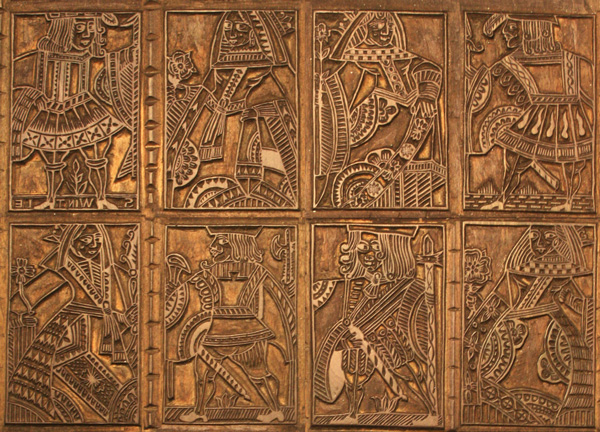
Woodblock Playing Cards: Photo from a WOPC article
This innovative printing method began around the 15th century. It is a form of intaglio printing, where impressions and designs are pressed into copperplates either through engraving (direct intaglio) or acid etching (indirect intaglio).
Master E.S., also known as Master of the Playing Cards, developed this process of playing card printing.

The Queen of Flowers by Master of the Playing Cards
Attributed to The Metropolitan Museum of Art
Toward the end of the 18th century, Lithography (Latin – litho: stone; graph: write) was invented in Germany by Alois Senefelder. Many artists, as well as playing card creators, adopted this water-and-oil-based technique. Not only did it revolutionize colored impressions through chromolithographs but also introduced a cheaper printing method through limestone rather than copper.
So, what did lithography printing look like? The card’s design was etched onto limestone using oil. The ink was then applied, sinking into the design area and then transferred onto paper for production. Litho printing never truly went out of style. It adapted as technology advanced.
“El Barco” Playing Cards Created Through Chromolithograph
Also known as offset printing, this modern litho process uses rubber rollers to transfer images from plate to paper. As opposed to hand-drawn designs, offset uses a machine to create the image.
We use a Xerox digital printer to produce your custom projects like playing cards and games, tarot and oracle as well as flashcards. The first digital printers arrived in the early 1990s and today they reign quite popular in the printing industry.
Right now, it may seem like we have reached or surpassed the height of playing card printing, but this is only the beginning. Whether the future will enhance our modern printing machine or invent something entirely new, Shuffled Ink looks forward to many more years manufacturing your awesome personalized card products!
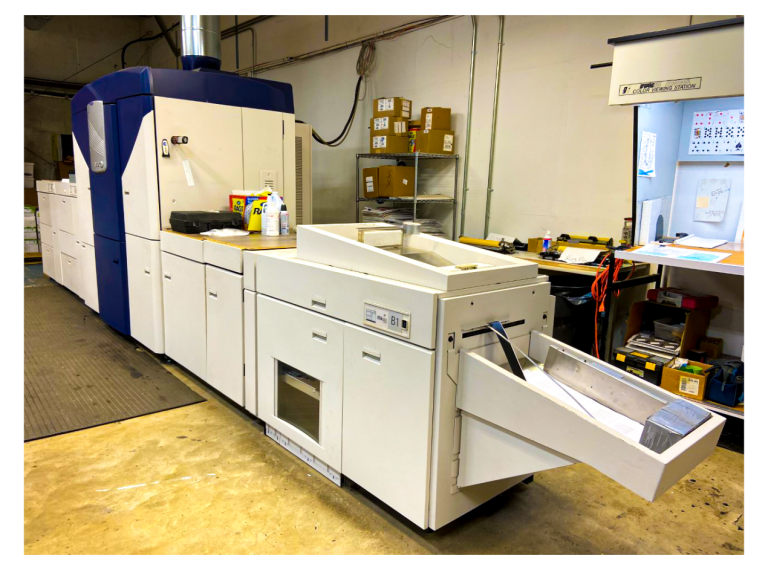
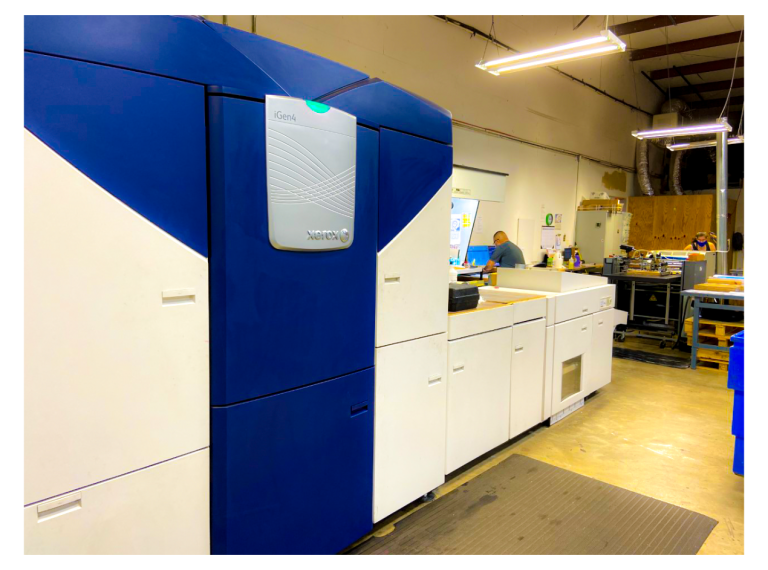
Xerox Printing Machine at Shuffled Ink
Shuffled Ink is a multigenerational family business with an unwavering, decades-old mission: to provide an unparalleled experience in customer service and product quality to ensure that all clients’ card visions meet reality.
View this post on Instagram
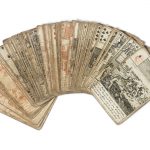 Thomas Bowles established his printing shop in the late 17th century. He not only dominated the London market well into the next century but also bred four generations of printmakers. The Bowles family specialized in maps, guidebooks and topographical prints as well as produced some playing cards and games.
In 1714, shortly before Thomas’ demise, he passed the business to his oldest son, Thomas II. He followed in his father’s footsteps as a successful printseller and publisher, opening a shop in St. Paul’s Churchyard. His younger brother, John, managed his own shop as well, creating original map designs for clients.
John’s son, Carington, worked alongside him for ten years as John Bowles & Son. Thomas II’s son, Thomas III, was destined to follow in the same path but, unfortunately, died the same year he joined the partnership. In 1767, Carington’s son, Henry Carington Bowles, took over the family business.
In this article, we will look at playing card decks and illustrations as well as games printed, published and sold by the Bowles family.
Thomas Bowles established his printing shop in the late 17th century. He not only dominated the London market well into the next century but also bred four generations of printmakers. The Bowles family specialized in maps, guidebooks and topographical prints as well as produced some playing cards and games.
In 1714, shortly before Thomas’ demise, he passed the business to his oldest son, Thomas II. He followed in his father’s footsteps as a successful printseller and publisher, opening a shop in St. Paul’s Churchyard. His younger brother, John, managed his own shop as well, creating original map designs for clients.
John’s son, Carington, worked alongside him for ten years as John Bowles & Son. Thomas II’s son, Thomas III, was destined to follow in the same path but, unfortunately, died the same year he joined the partnership. In 1767, Carington’s son, Henry Carington Bowles, took over the family business.
In this article, we will look at playing card decks and illustrations as well as games printed, published and sold by the Bowles family.
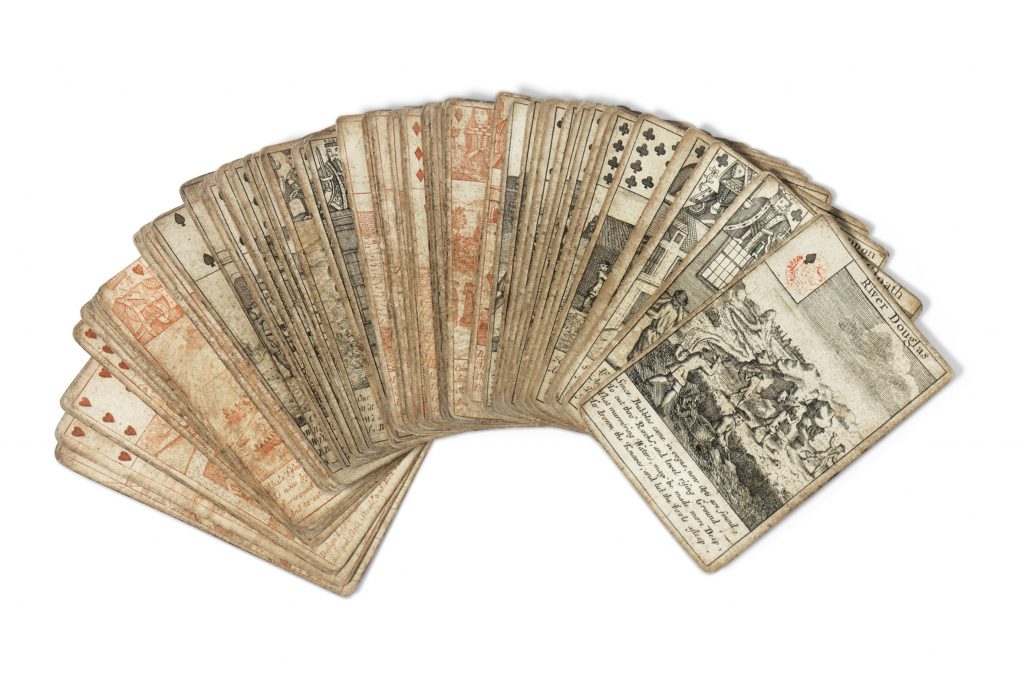
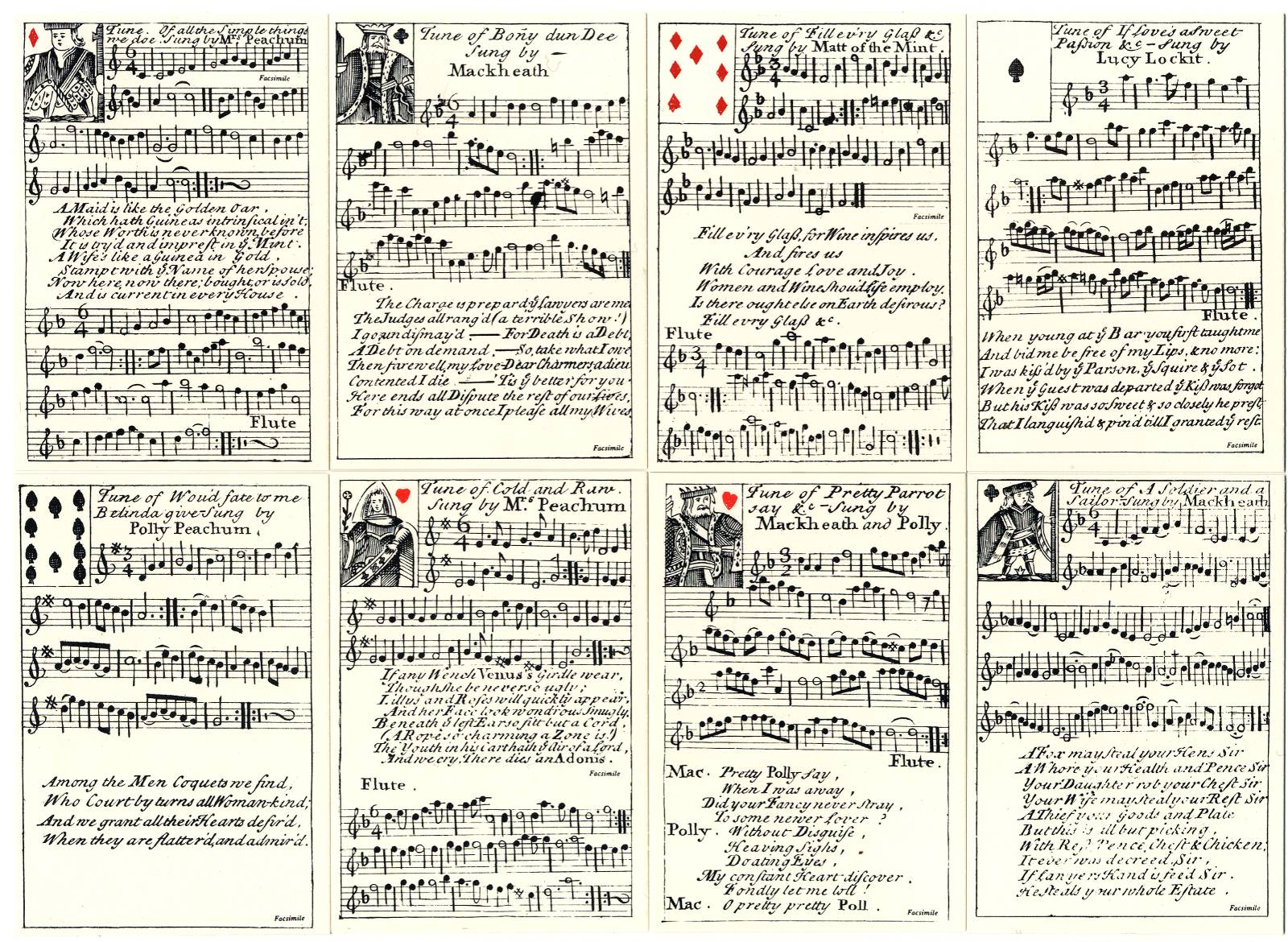
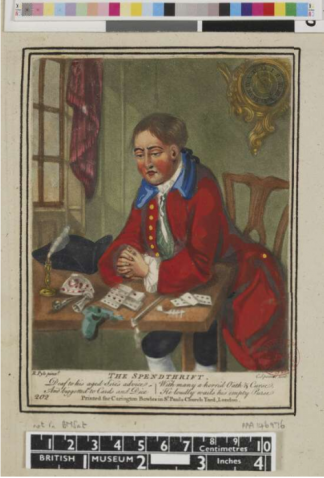
Bowles’ Geographical Game of the World Game Board
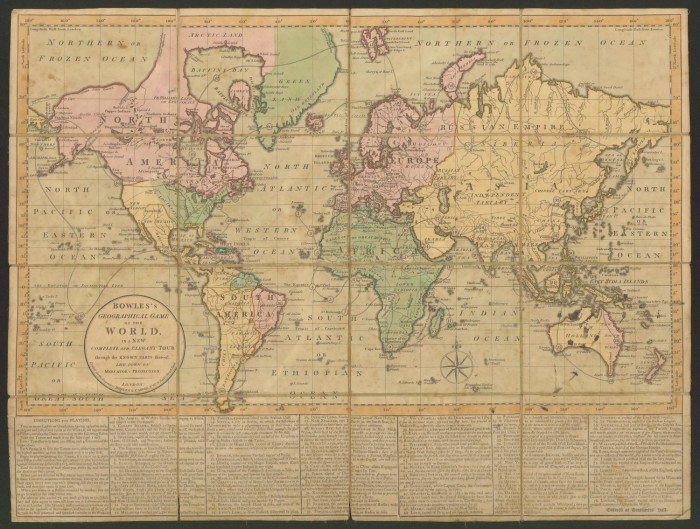
Bowles’s Geographical Game of the World, case front
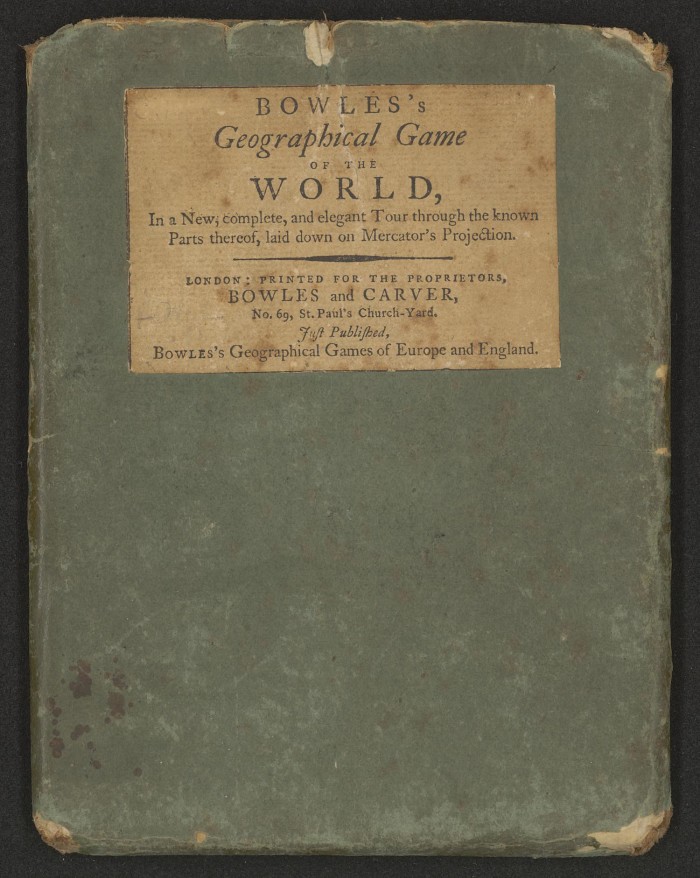
Bowles’ Geographical Game of the World, case back
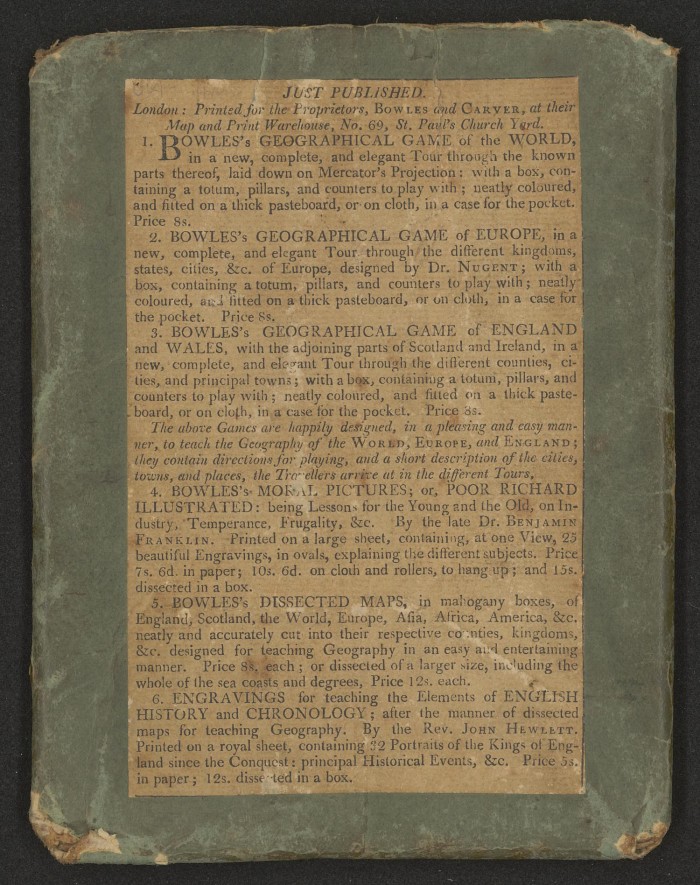
 Pandemic outbreaks are constant threads in human history. These worldwide infectious diseases date back to as early as 165 CE when the Antonine Plague struck the Roman Empire. A curious observation that has recently circulated the internet is the roughly 100-year disease pattern: 1720 Plague; 1817 Cholera; 1918 Spanish Influenza; 2019 Coronavirus.
It’s difficult to call these repetitions a simple coincidence, but we won’t go into deep conspiracy theories today. Instead, here’s a list of the various card games, playing card designs and board games created during such unprecedented times.
Pandemic outbreaks are constant threads in human history. These worldwide infectious diseases date back to as early as 165 CE when the Antonine Plague struck the Roman Empire. A curious observation that has recently circulated the internet is the roughly 100-year disease pattern: 1720 Plague; 1817 Cholera; 1918 Spanish Influenza; 2019 Coronavirus.
It’s difficult to call these repetitions a simple coincidence, but we won’t go into deep conspiracy theories today. Instead, here’s a list of the various card games, playing card designs and board games created during such unprecedented times.
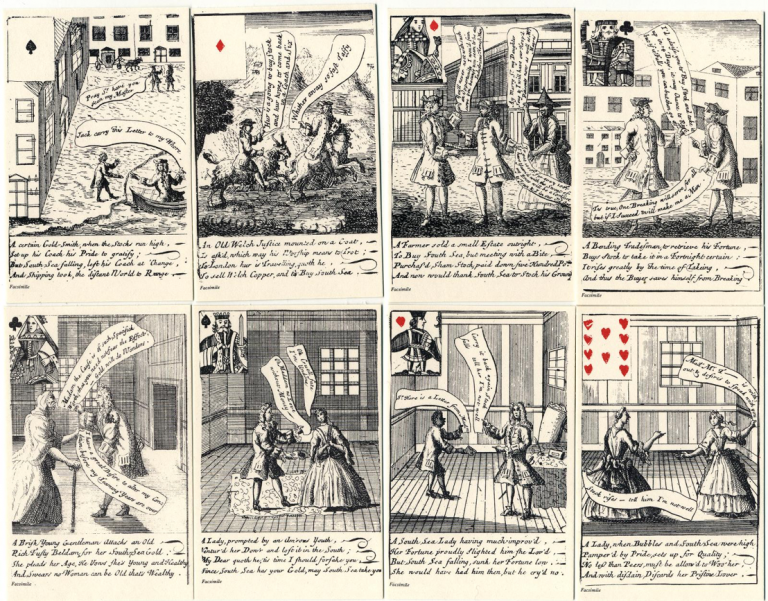
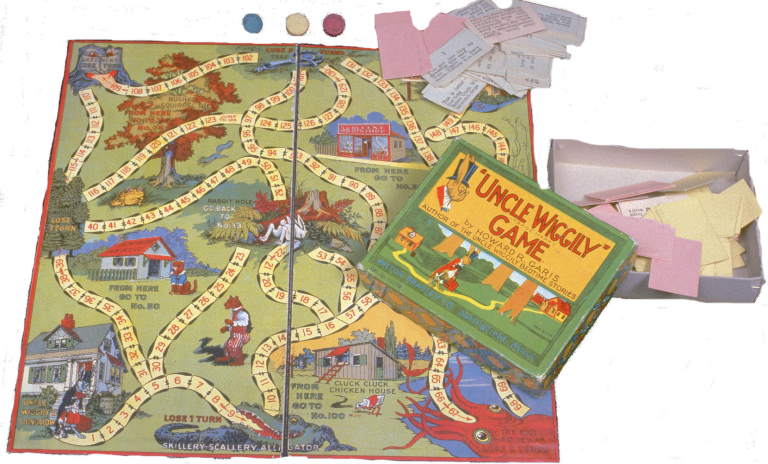
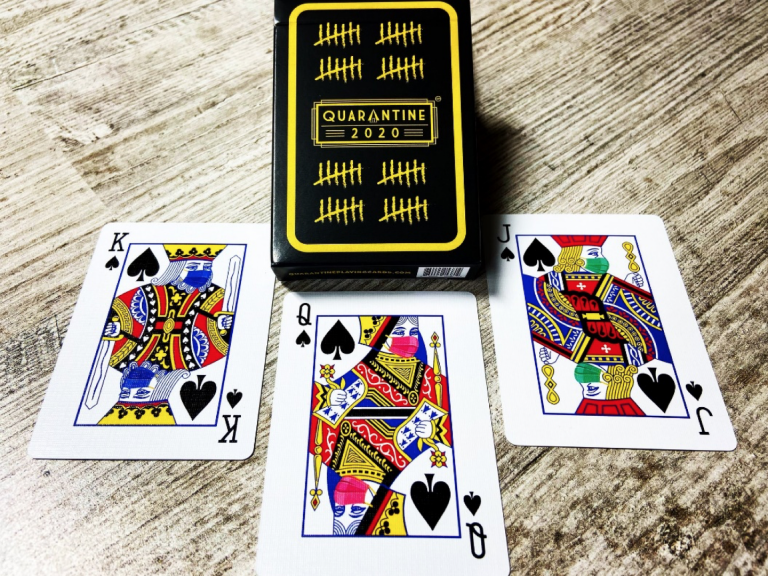
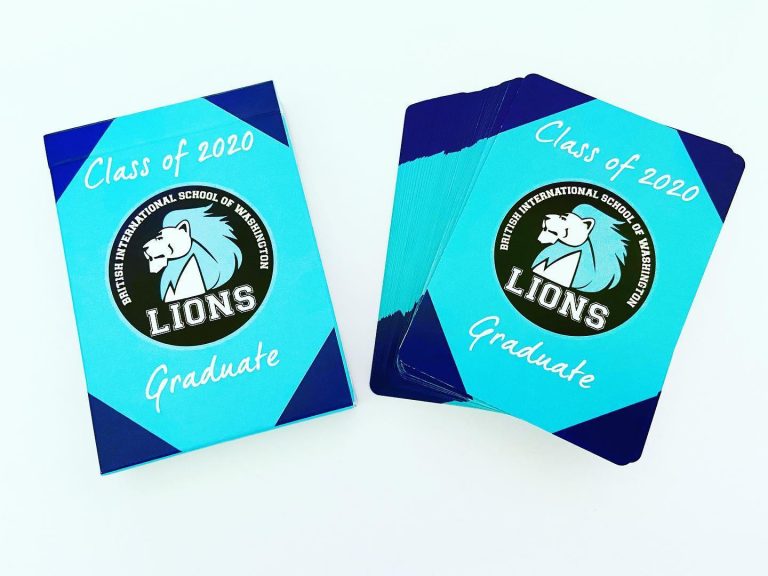
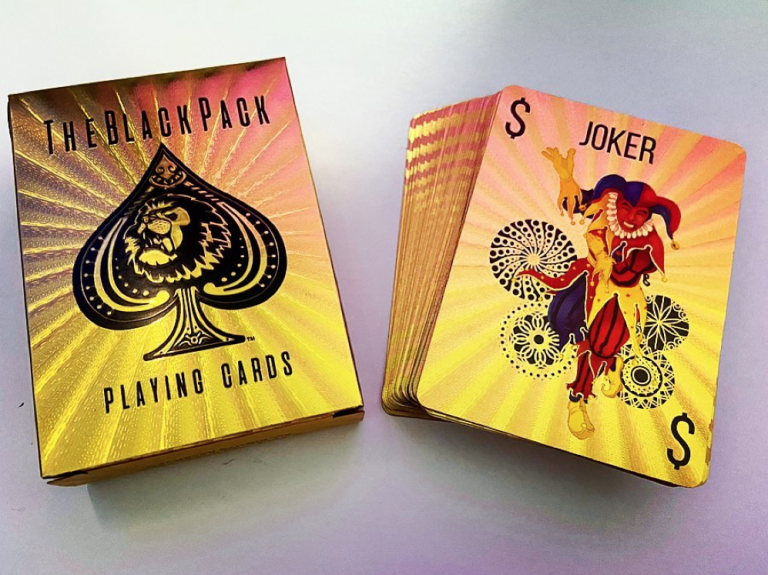

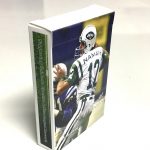
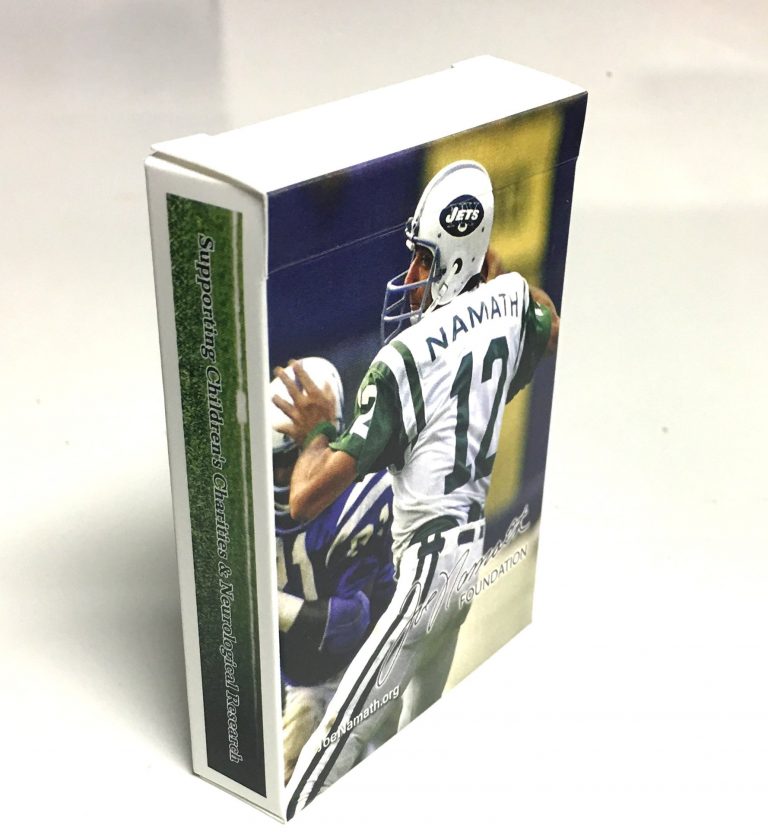 Joe Namath Foundation Customized Playing Cards
Joe Namath Foundation Customized Playing Cards Shuffled Ink owner, Charles Levin, with Joe Namath at the Joe Namath Foundation charity golf tournament in Jupiter, FL
Shuffled Ink owner, Charles Levin, with Joe Namath at the Joe Namath Foundation charity golf tournament in Jupiter, FL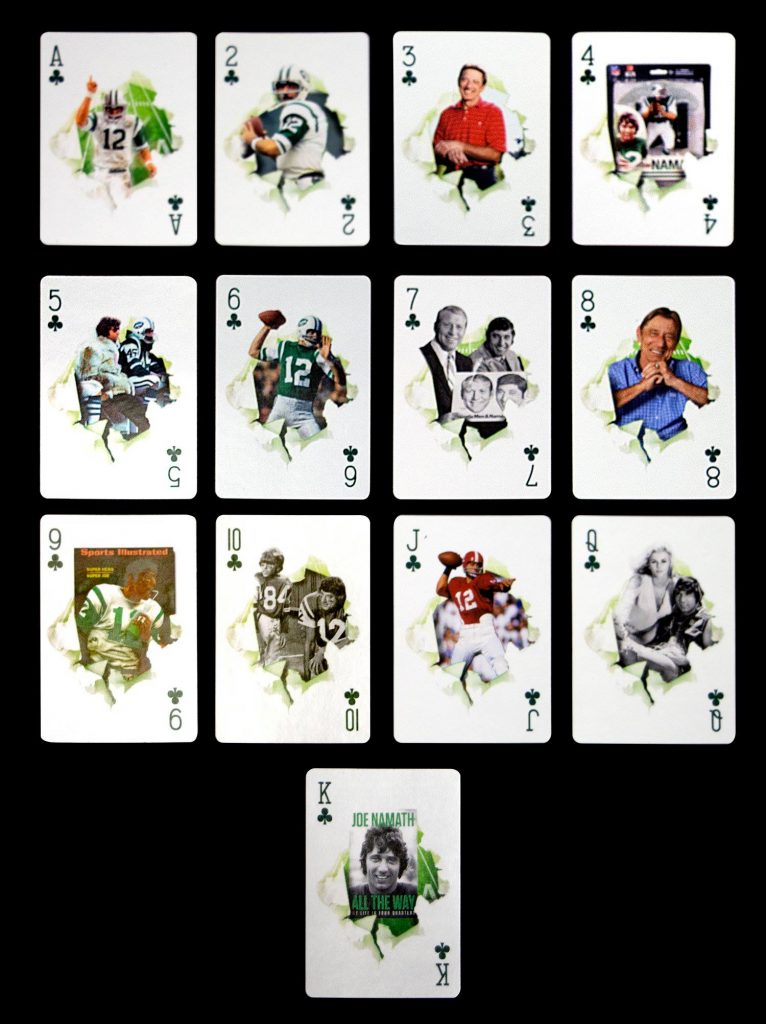 Joe Namath Foundation Customized Playing Cards
Joe Namath Foundation Customized Playing Cards